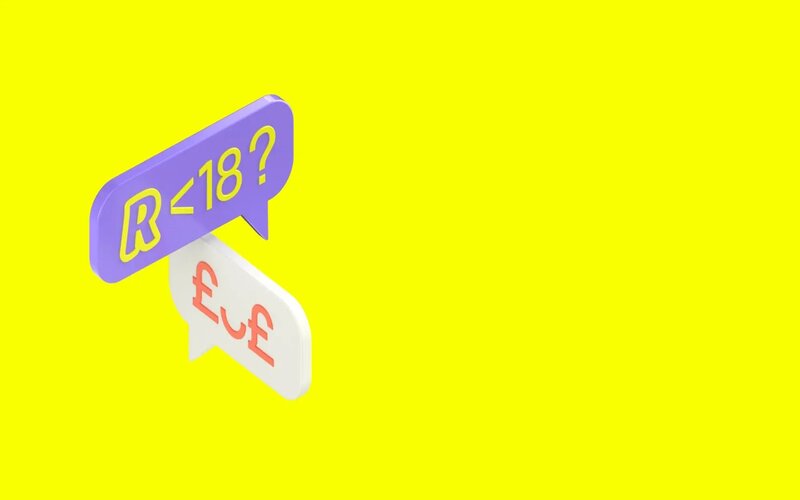With interest rates high, growth slowing and general uncertainty about the next few months in the Australian economy, it's potentially a risky time to invest in equities.
Fixed income investments can be less lucrative, but offer the security of guaranteed returns.
Term deposits tend to be the most popular fixed income investment option for retail investors, but with the new opportunities created by novel platforms, bonds are also becoming a more viable option for everyday Aussies.
In her appearance on the Savings Tip Jar podcast, Blossom founder Gaby Rosenberg said that despite the disruption to bond markets from turbulent economic conditions, the outlook remains positive.
"[Bonds are] a good place for investors to look into for their money right now," Ms Rosenberg said.
"The bond market disruption that we're seeing, since all the interest rate hikes, it really benefits those holding high quality assets.
"What it does is it provides more accurate pricing of assets, which means there's more opportunities to capitalise on higher overall yields, and therefore you can bolster your medium term performance."
However, Ms Rosenberg also warned against investors jumping straight in and putting their life savings on all the bonds they can afford.
"The bond market isn't homogenous and you really need expert management to help you navigate the current market conditions.
"I really don't believe that the vast majority of investors have the knowledge or the experience, the skill, perhaps even the time, to invest in bonds individually, so I would definitely encourage retail investors to look closely at the bond sector right now, but I wouldn't encourage anyone buying individual bonds on their own."
What are bonds?
A bond is effectively a loan from the investor to the issuer, which might be the government or a company.
Bonds are considered to be a safer asset to hold, particularly government bonds, since no Australian government has ever defaulted on its debt.
The issuer makes periodic interest payments at a fixed rate to the investor, and then repays the amount in full when the bond matures.
In the meantime, bonds can be traded on the secondary market, at prices that can fluctuate with interest rates.
For example, let's say a three year government bond with a principal amount of $100 was issued on January 31st 2023, with an annual interest payment of 4%.
That means every year until the bond matures on January 31st 2026, the government will pay $4 to the holder of the bond, then repay the $100 in full upon maturity.
Imagine now that interest rates go down, and in 2024, the return on new bonds issued is 3%.
This makes the existing bond, with higher payments, more valuable, so its price goes up in the secondary market.
In theory, the price might rise up to $133.33, because this would be the point where a $4 interest payment is equivalent to a 3% annual return, which is why the relationship between bond yields and prices is considered to be inverse (as bond prices go up, bond yields go down).
Read more: Buying Australian Government bonds
Why are bond yields so high right now?
Ms Rosenberg gave a few reasons why bonds are delivering particularly strong returns at the moment, despite what she referred to as 'disruption' facing the market.
Firstly, bond yields tend to trade above the Reserve Bank cash rate, compensating for the opportunity cost of not storing money in a bank (investors are unlikely to buy bonds if they can get equivalent returns from a savings or term deposit account, for example).
Secondly, she said a perceived increase in the risk of default could also bring up yields.
"If there's a risk of default of the bond, investors need a high yield, otherwise they won't agree to invest," she explained.
Finally, she said that demand for bonds has dropped, which decreases liquidity since it's harder to sell.
"As we know with any asset class, when there are fewer buyers and sellers, prices can drop.
"Investors can demand higher yields to basically compensate for the increased risk of holding the less liquid bonds."
How can I invest?
Bonds have traditionally been the remit of large, institutional investors, because of significant barriers to entry like high minimum purchase size in the primary market.
Both corporate and treasury bonds can be traded on the ASX, using instruments called exchange traded bonds.
Alternatively, the Blossom Fund allows investors to micro invest in bonds and other fixed income instruments, targeting a 5.70% p.a annual return.
Investors buy into the fund, which is composed of these assets, so there isn't the need to intimately understand and research the market.
Blossom takes its fees out of the returns of the fund, and only does so once it has achieved the minimum 5.70% p.a return.
Ms Rosenberg said Blossom is allowing more young Australians to benefit from the security fixed income assets provide, with a minimum investment of just $5.
"When we first launched, we had an average [user] age of 31 years old, and we haven't strayed too far from that," she told the podcast.
Read more: Who offers microinvesting apps in Australia?
Image by Austin Distel via Unsplash

Ready, Set, Buy!
Learn everything you need to know about buying property – from choosing the right property and home loan, to the purchasing process, tips to save money and more!
With bonus Q&A sheet and Crossword!


 Harry O'Sullivan
Harry O'Sullivan
 Harrison Astbury
Harrison Astbury


